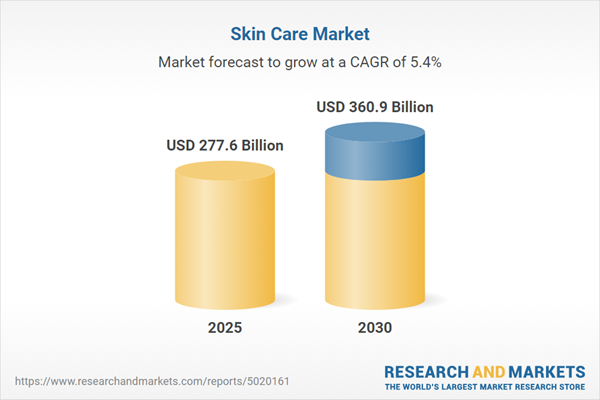The global skincare product market is driven by the increasing demand for sun creams, body lotions, face moisturizers, and other skincare products. The demand is increasing due to rising disposable income, urbanization in developing countries, changing lifestyles, and advanced skincare products. Skincare products are used for both beauty enhancement and as medicine for skin-related problems. The market is expected to expand significantly as consumers become more conscious of their appearance and skin quality. People are increasingly sensitive about skincare products, leading them to choose more carefully what suits their needs. The rise in global warming and climate change has increased the use of skin care products due to harsh sunlight and dusty & dry weather, which causes the skin to turn dark, dry, and crack.
Market Trends:
- Growing pollution is fueling demand for skincare products: The skincare market is expanding as harsh weather conditions, such as strong sunlight causing dryness, darkening, roughness, and skin diseases, drive the need for effective solutions. Additionally, the increasing emphasis on grooming and personal hygiene among both men and women is contributing to this growth. Face care products, in particular, hold a substantial share of the global skincare market.
- Cosmetic innovation merges science and beauty: Advancements in technology, including artificial intelligence (AI), are being leveraged to improve the efficiency and effectiveness of the cosmetics industry.
- North America’s market dominance: North America is anticipated to capture a significant portion of the skincare market, driven by the region’s early adoption of innovative products and advanced technologies. Increased investment in research and development to diversify product offerings, along with aggressive advertising and marketing campaigns on social media platforms, are further propelling market growth.
Some of the major players covered in this report include L'Oréal S.A., Estée Lauder Companies Inc., Avon Products, Inc., Coty Inc., Revlon, Shiseido Co, Ltd, among others.
Key Benefits of this Report:
- Insightful Analysis: Gain detailed market insights covering major as well as emerging geographical regions, focusing on customer segments, government policies and socio-economic factors, consumer preferences, industry verticals, and other sub-segments.
- Competitive Landscape: Understand the strategic maneuvers employed by key players globally to understand possible market penetration with the correct strategy.
- Market Drivers & Future Trends: Explore the dynamic factors and pivotal market trends and how they will shape future market developments.
- Actionable Recommendations: Utilize the insights to exercise strategic decisions to uncover new business streams and revenues in a dynamic environment.
- Caters to a Wide Audience: Beneficial and cost-effective for startups, research institutions, consultants, SMEs, and large enterprises.
What can businesses use this report for?
Industry and Market Insights, Opportunity Assessment, Product Demand Forecasting, Market Entry Strategy, Geographical Expansion, Capital Investment Decisions, Regulatory Framework & Implications, New Product Development, Competitive Intelligence.Report Coverage:
- Historical data from 2022 to 2024 & forecast data from 2025 to 2030
- Growth Opportunities, Challenges, Supply Chain Outlook, Regulatory Framework, and Trend Analysis
- Competitive Positioning, Strategies, and Market Share Analysis
- Revenue Growth and Forecast Assessment of segments and regions including countries
- Company Profiling (Strategies, Products, Financial Information, and Key Developments among others)
Skin Care Market is analyzed into the following segments:
By Product
- Face Products
- Sun Protection
- Face Moisturizers
- Face Brightening
- Others
- Body Products
By Distribution Channel
- Online
- Offline
By Region
- North America
- Europe
- Asia Pacific
- South America
- Middle East & Africa
Table of Contents
Companies Mentioned
- L'Oréal S.A.
- Estée Lauder Companies Inc.
- Avon Products, Inc.
- Coty Inc.
- Revlon
- Shiseido Co, Ltd
- Unilever N.V.
- Procter & Gamble Company
- Beiersdorf AG
- Johnson and Johnson
- A.G. Industries
- Naturis Cosmetic
Table Information
| Report Attribute | Details |
|---|---|
| No. of Pages | 135 |
| Published | February 2025 |
| Forecast Period | 2025 - 2030 |
| Estimated Market Value ( USD | $ 277.6 Billion |
| Forecasted Market Value ( USD | $ 360.9 Billion |
| Compound Annual Growth Rate | 5.3% |
| Regions Covered | Global |
| No. of Companies Mentioned | 12 |









